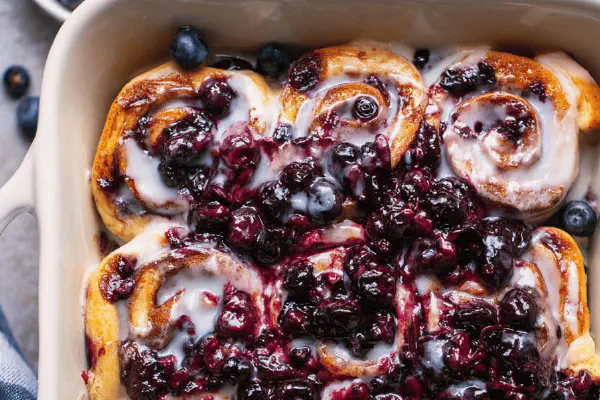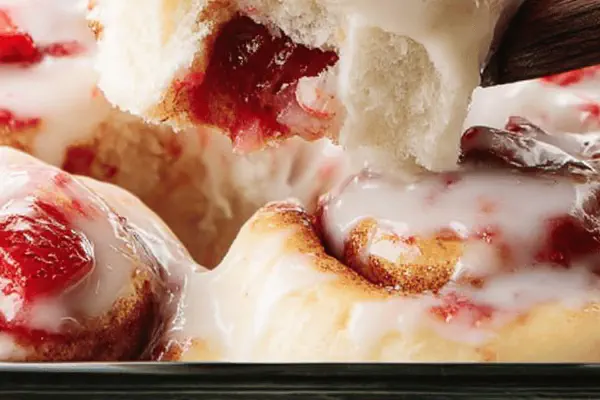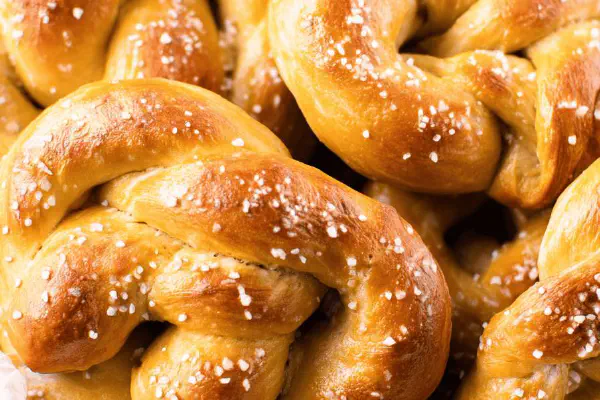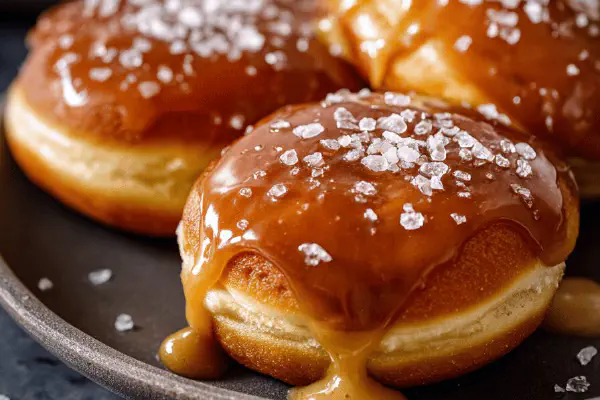Lenten Spiced Buns

By Emma
Certified Culinary Professional
Ingredients
- 950 ml (3 3/4 cups) all-purpose flour
- 10 ml (2 tsp) instant yeast
- 3 ml (1/2 tsp) salt
- 90 ml (6 tbsp) maple syrup
- 125 ml (1/2 cup) unsalted butter, melted and cooled
- 3 eggs, lightly beaten
- 240 ml (1 cup) warmed milk
- 125 ml (1/2 cup) chopped dried apricots
- Butter, for greasing
- Milk, for brushing
Glaze
- 1 egg white
- 300 ml (1 1/4 cups) powdered sugar
- 2 tbsp honey
- Zest of 1 lemon
About the ingredients
Method
- 1. Warm milk and butter together but watch temperature—too hot kills your yeast. Mix dry ingredients, yeast included. Then add maple syrup, eggs, milk-butter mix. Stir till shaggy dough. Flour everywhere but don’t overdo it—it should stay soft and tacky. Tip onto floured surface, knead 7 minutes. Dough becomes smooth, elastic; bounce back when poked. Don’t rush this; under-kneaded dough = dense buns.
- 2. Apricots folded in last, knead gently 2 minutes—too rough tears gluten. Slap oiled bowl, dough inside, cover with damp towel. Find a draft-free warm spot (oven off lights on works) for first rise—about 50 minutes, dough should double, jiggly, puffy. If it still springs back tight, needs more time.
- 3. Line two baking sheets with parchment; punch dough down and divide into 20 equal portions. Shape roughly round—no perfect balls unless you like tough skin. Place spaced. Brush all buns with milk for color and slight crisp. Use sharp scissors to snip crosses on top, don’t press hard or they’ll deflate. Second rise again in warm place—35 minutes; dough should swell noticeably, now fragile when poked but springs back slowly.
- 4. Preheat oven to 175 °C (350 °F). Oven rack in middle. Baking time isn’t set in stone—start watching after 28 minutes. Buns turn deep golden, smell rich, edges slightly caramelized. Tap bottoms expecting hollow sound. Underbaked buns feel dense and sticky. Cool on wire rack before glazing.
- 5. Whisk egg white with honey and lemon zest till smooth, add powdered sugar gradually for thick but pipeable glaze. Swirl on each bun in cross patterns, let glaze set at room temperature—not fridge or it’ll crack. Final touch, that zing from lemon lifts richness. Serve just warm, crumb soft and tender, or next day toasted.
Cooking tips
Chef's notes
- 💡 Milk and butter warmed just below hot. Too warm kills yeast fast. Use finger test. Mix dry ingredients first, yeast folded in carefully. Maple syrup adds moisture, sticky dough feels tacky but resist the flour urge. Knead firmly, 7 minutes minimum. Elastic texture, bounces back. Under-kneading means tight crumb, dense buns later. Apricots fold gently, no harsh kneading or gluten tears. Dough handled rough will lose air pockets, flat shapes.
- 💡 Watch dough rise visually and by feel. First rise doubles, jiggles softly like shaky jelly. Under-ready if springs back tight fast. Overproof smells sour, deflates easily. Use draft-free warm spot; oven off but light on is decent. Timing varies. Scoring crosses with scissors, clean cuts, not dragging. Pressing flattens dough traps air. Milk brush before second rise adds subtle shine and slight crust crispness. Uniform bun size ensures consistent bake times, use scraper to divide evenly.
- 💡 Baking at 175 C, rack mid-oven. Color deep gold, edges caramelized, aroma nutty, almost spiced warm. Tap bottoms for hollow sound; dense or sticky means bake longer. Don’t trust time alone, rely on senses. Cool on wire rack to let moisture escape; skipping can yield soggy bottoms. Glaze made thick but pipeable with honey and lemon zest; lemon zest sharpens glaze brightness, honey adds shine and stickiness. Apply patterns quickly but gently—too cold glaze cracks, warm room temps best for setting.
- 💡 Kneading stage critical, elasticity tells all. Too stiff? Add tiny splash warm milk. Too sticky? Flour lightly and slowly, don’t overdo or buns get dense crust. Glaze pH sensitive—lime juice dropped, lemon zest preferred to avoid cracking glaze. Sub maple syrup for sugar changes browning and flavor profile, slightly woody notes. Butter melted in milk—warm not hot keeps yeast alive. Instant yeast faster rise but activate dry first if used. Salt balances sweetness and yeast control. Milk brushing not drowning; light coats yield shiny but crisp outside.
- 💡 Cross cuts on buns—scissors over knife every time. Cleaner cuts, no dragging or tearing, prevents deflating dough bubbles. Shape buns roughly round for rustic look, exact balls risk tough skins. Dough softness key; too stiff means dense crumb. Bake time flexible; smell guides turning deep golden cues readiness more than clock. Leftover glaze seals buns airtight, keeps freshness better. Scoring, shaping, baking each step needs attention—ignore one, buns suffer overall texture or rise.
Common questions
How to avoid overproofing?
Smell first; sour means overproof. Dough feels fragile, deflates on poking. Cooler spot slows rise. Punch down and reshape if unsure. Watch bounce-back, not just time. Overproof smells off, buns collapse after baking, dry crumb.
Can active dry yeast replace instant?
Yes but activate first in warm milk with sugar, 5-10 minutes foamy. Instant skips proof step. Timing changes slightly, slower rise. Both work but instant quicker. Adjust rising spots too; warmer for active dry, careful not to kill yeast.
Substitutes for apricots?
Raisins original but flavor milder, texture dense. Dried cherries or cranberries add tartness, chew varies. Chop coarsely to avoid clumping. Use fresh zest if no dried fruits. Adjust sugar or syrup slightly depending on sweetness of fruit used.
Storing leftover buns?
Room temp up to two days, wrapped loose to avoid moisture build-up. Refrigerate to extend but may dry crumb, toast before eating. Freeze in airtight bag or container; thaw at room temp, refresh glaze then. Avoid fridge glazing; glaze cracks fast from condensation.



